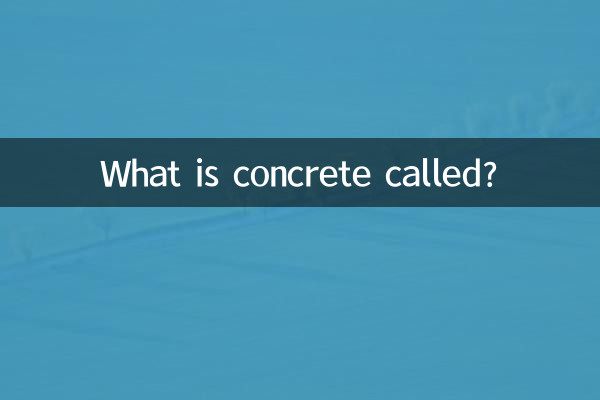What is concrete called?
Concrete is one of the most commonly used materials in construction projects. It is widely used in the construction of bridges, buildings, roads and other infrastructure because of its durability and strong plasticity. However, in addition to the name "concrete", it has many other nicknames and common names. This article will combine the hot topics and hot content on the Internet in the past 10 days to introduce you to other names of concrete in detail and organize related structured data.
1. Another name for concrete

Concrete has many names in different regions and industries. The following are the common ones:
| name | Usage scenarios | Remark |
|---|---|---|
| concrete | Engineering terminology, academic literature | It is composed of "artificial stone" and is the abbreviation of concrete. |
| cement | Spoken in some areas | Not accurate, cement is only one component of concrete |
| Sanhetu | traditional architecture | Early concrete was made from a mixture of lime, clay and sand, unlike modern concrete |
2. Recent hot topics related to concrete
In the past 10 days, discussions about concrete on the entire Internet have mainly focused on the following aspects:
| topic | heat index | Main discussion points |
|---|---|---|
| Low carbon concrete technology | ★★★★★ | Research, development and application of environmentally friendly concrete |
| 3D printed concrete buildings | ★★★★☆ | Breakthrough in new construction technology |
| concrete art creation | ★★★☆☆ | Innovative uses of concrete in furniture and decoration |
3. Composition and characteristics of concrete
The main ingredients of concrete include cement, aggregate (sand, stone) and water. The following is its basic proportion:
| Element | Scale range | effect |
|---|---|---|
| cement | 10%-15% | bonding material |
| Aggregate (sand, stone) | 60%-75% | Fill and enhance |
| water | 15%-20% | Participate in chemical reactions |
4. History and Culture of Concrete
The use of concrete can be traced back to ancient Rome, when it was known as "Roman concrete". The following are important nodes in the history of concrete development:
| period | develop | representative building |
|---|---|---|
| ancient rome | pozzolan concrete | pantheon |
| 19th century | Portland cement invention | The birth of modern concrete |
| 20th century | Popularity of reinforced concrete | skyscraper |
5. Future development trends of concrete
With the development of science and technology, concrete technology is also constantly innovating. The following are possible future directions:
| Technical direction | Features | Application prospects |
|---|---|---|
| self-healing concrete | Can automatically repair cracks | Extend building life |
| permeable concrete | allow moisture to penetrate | Sponge city construction |
| carbon capture concrete | absorb carbon dioxide | Environmentally friendly building materials |
Conclusion
As one of mankind's greatest building materials, concrete has been driving the development of architectural civilization from the Pantheon in ancient Rome to modern skyscrapers. Whether it is called "concrete" or "sanhetu", its essence is the crystallization of human wisdom. In the future, with the advancement of technology, concrete will continue to serve human society in a more environmentally friendly and intelligent form.

check the details

check the details